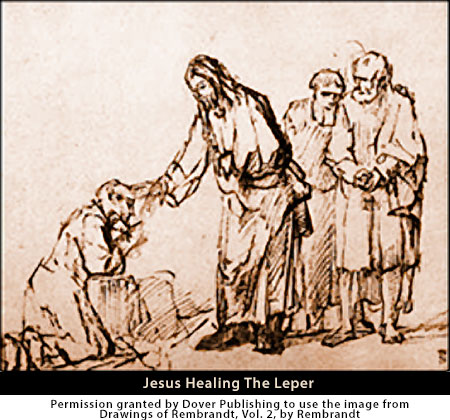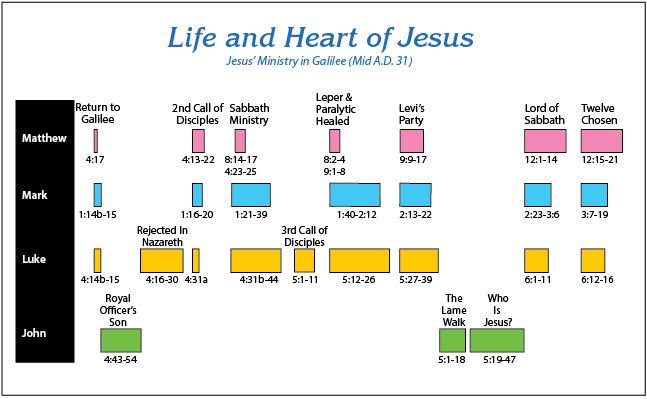Leprosy is still a major disease in the year 2005. According to the Hughes Medical Center, there are 200 new cases of leprosy each year in the United States and 700,000 worldwide. India, Indonesia, Myanmar, and Brazil have the greatest number of outbreaks of leprosy. Statistically, there are 65 cases every hour. Leprosy is also called Hansen’s disease. It is a chronic, infectious disease that is caused by airborne bacteria. The disease attacks the nerves, resulting in numbness. Most of the people of the world are immune to it; but when the disease finds a home, it moves to the cooler parts of the body such as the skin, the eye, upper respiratory tract, and the genital region. The effects of the disease can be seen in photos published in text books and on the internet. There are two types of leprosy. The mildest form results in scaly and crusty skin. The worst form of the disease results in missing fingers, toes, and hands. It is an ugly disease.
The Leper Comes
This study in the Life and Heart of Jesus includes a leper – a man full of leprosy. Leprosy is not just a disease of the past. It is also a disease of the present. The poor man had the worst kind of leprosy as we will soon discover. The records of this event are found in Matthew 8:2-4; Mark 1:40-45; and Luke 5:12-16.
Before we look at the first verse, we should recall that Jesus had recently called Peter, Andrew, James, and John a third time. We were told in Luke 5:11 that these men left everything and followed Him. When we come to verse 12, time has elapsed. It appears that a lot of time has passed, because we are told that He enters “one of the cities.” We are not told which city, but it appears that Jesus had been traveling from one city to another in the “white space” in our Bible between verse 11 and 12.
While He was in one of the cities, behold, there was a man covered with leprosy; and when he saw Jesus, he fell on his face . . . Luke 5:12a (NASB)
The Greek word for leper is LEPRAS, and it means “a dread skin disease” or “a scale.” This is a very good description of the disease in its milder form. The gospel of Luke was written by a medical doctor. He tells us that this leper “was covered with leprosy.” He did not have a mild form of leprosy. He was full of leprosy from head to toe and front to back.

Mosaic Law
In the book of Leviticus, God gave the Israelites guidelines for controlling the disease of leprosy. God provided guidelines in Leviticus 13-14 which would help the priests identify leprosy and know how to respond if and when the man or woman was healed.
When leprosy was identified in a man or woman, he or she had to live alone (Leviticus 13:46). According to Josephus, Jewish lepers were expelled from the city (Josephus, Flavius. The Wars of the Jews 5.227). Everywhere they went they had to shout out loud, “Unclean, unclean!” (Leviticus 13:45). The Talmud required that a leper had to stay six feet (1.8 m) away from other people and 150 ft (45.6 m) when there was wind. According to the Mishnah, anyone who touched a leper, was near a leper, touched anything that a leper had touched, or entered his/her home was ceremonially unclean (Neusner, Jacob. The Mishnah pp. 997-1009). As a result the Jewish rabbis avoided lepers.

It must have been a lonely and a very emotionally painful life for a leper. Imagine the pain that would have occurred when a father or a daughter became a leper and was excluded from the city. How would you feel if you were a leper? How did parents, a wife, or the children feel when they had to talk to a family member six feet way? Also, it must have been difficult to buy goods from another person. The person selling the merchandise would need to drop the item on the ground and then step away before the leper could go and pick it up. If there was a disagreement or a crime committed against a leper, did the local policemen ignore them for fear of being defiled?
This reminds me of the time that I visited a person in an Intensive Care Unit (ICU) and I was told to put on a face mask, gown, and blue gloves. The coverings were for my protection as well as for the protection of the patient. With another patient, I had to wear a gown and gloves. Then before I left, I had to wash my hands with anti-bacterial soap. God implemented the guidelines in order to protect the leper and those around him/her. But the religious leaders – the rabbis – added to the Word of God and made the life of a leper more difficult.
Jesus’ Response
The gospel of Mark tells us that when the man saw Jesus, he fell to his knees. Matthew says that he bowed down. Luke pulled it all together and stated that the man ended up with his face to the ground. The man fell to his knees and bowed down with his face to the ground. Then he said, “If You are willing, You can make me clean.”
. . . and when he saw Jesus, he fell on his face and implored Him, saying, “Lord, if You are willing, You can make me clean.” Luke 5:12b (NASB)
How did Jesus feel towards this human being that the rabbis would not go near? The Holy Spirit tells us in the gospel of Mark.
Moved with compassion, Jesus stretched out His hand . . . Mark 1:41 (NASB)

Jesus was moved with compassion. Jesus did not move away as the rabbis would have. He probably moved closer. When the leper said,
Lord, if You are willing, You can make me clean.
He used an important Greek word for “will.” There are two basic Greek words for “will.” The first one has the sense of a rational decision, but the second one has the sense of an “emotional choice.” This last one is the word that the leper used. He appealed to Jesus’ emotions. He appealed to Jesus’ passion, and Jesus responded with emotion.
Matthew, Mark, and Luke tell us that Jesus stretched out His hand and as He touched him said, “I am willing.”
And He stretched out His hand and touched him, saying, “I am willing; be cleansed.” And immediately the leprosy left him. Luke 5:13 (NASB)
Immediately, the leprosy left him. He was instantly healed. He did not need to wait for his healing. He was not in the process of being healed. He was healed!
Do Not Tell
Jesus then commanded the healed man not to tell anyone except for the priest. Jesus knew that he had to go to the priest in order to be pronounced cured and be allowed back in the city according to the Mosaic Law (Lev. 13-14).
And He sternly warned him and immediately sent him away . . . Mark 1:43 (NASB)
And He ordered him to tell no one, “But go and show yourself to the priest and make an offering for your cleansing, just as Moses commanded, as a testimony to them.” Luke 5:14 (NASB)
Before the man left, Jesus sternly warned him not to tell others about his healing. The Greek word for “sternly” is a strong one and implies that Jesus spoke very strongly to him. Jesus did not want this miracle healing to be known among the population, but the healed man told others anyway.
But the news about Him was spreading even farther, and large crowds were gathering to hear Him and to be healed of their sicknesses. Luke 5:15 (NASB)
The healed man eagerly told his story and like lightening the wonderful news spread. Large crowds came to listen to the Word of God and to be healed. Have you noticed that the people came first to hear the Word of God and then to be healed? This is a pattern that we are seeing. The Word of God is the priority, not fellowship and not singing. Fellowship and singing to God are important, but they are not the priority. Every time Jesus meets the crowds, He teaches first and heals second. It is a message for us. The Word of God is the priority. It is amazing how many churches devote only thirty minutes or less to the teaching of His Word today. Forty-five to sixty minutes used to be the standard. It reveals that the commitment to teaching His Word in many churches has been watered down. Jesus’ priority was the teaching.
But notice that Jesus’ ultimate priority was prayer.
But Jesus Himself would often slip away to the wilderness and pray. Luke 5:16 (NASB)
Even Jesus had to escape in order to pray. Have you ever noticed how “things” get in the way and crowd out your prayer life? Jesus would slip away. He would escape in order to pray. It is a great pattern for us to follow.

Conclusion
What did the disciples learn from the One whom they were following during this event? They learned that Jesus loves those that others would reject – even lepers. They learned that Jesus would not move away from one who needed to be loved. They learned that Jesus had great compassion. They learned that He was willing to reach out and touch a pleading man whom they would avoid. Jesus touched a leper! But these disciples would not have done that. They would have pulled away just as the rabbis had taught them.
Jesus touched a leper! Jesus reached out and comforted a man who had probably not been touched for many years. Jesus touched a man who needed to know that someone loved him enough to touch him. Jesus did.
Today, Jesus is still touching lepers – us! Jesus forgives our sins. He heals us. He comforts us. He rescues us: and when our lives are over, He takes us home. We are all sinners in this life. We are just like the leper. We are in great need. Because of His great compassion, He reaches out and forgives us when we believe in Him. Jesus is in the business of touching those who are in need. He touches us too!
We will close with this poem from Jess Moody,
Have you ever taken a real trip down inside the broken heart of a friend? To feel the sob of the soul – the raw, red crucible of emotional agony? To have this become almost as much yours as that of your soul-crushed neighbor? Then, to sit down with him/her – silently weep? This is the beginning of compassion. (modified quote by Lloyd Cory, Quote Uniquote)
That is what Jesus does for each one us. He touches lepers!